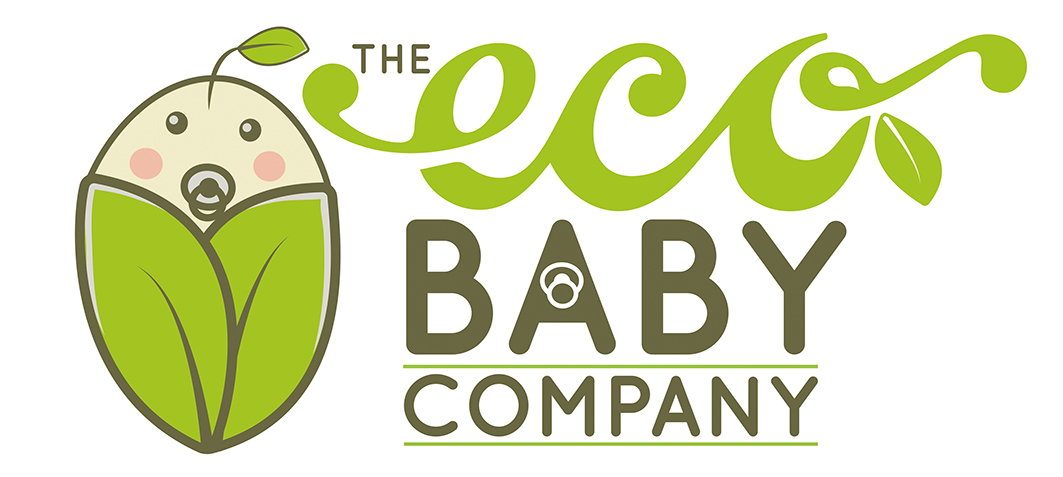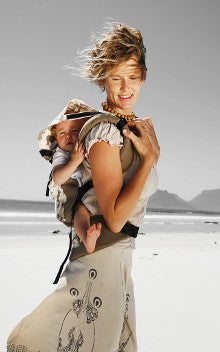Pure Beginnings - Natural Chest Rub:
This 100% natural chest rub with eucalyptus & lavender is the perfect addition to your winter medicine cabinet. Free from petroleum and menthol, and with 100% of the ingredients from natural origin, the chest rub is safe to use on babies as young as 3 months old. Incorporating the powerful healing properties of eucalyptus, tea tree, lavender and frankincense, the chest rub provides a gentle and effective way to ease congestion.
- Eucalyptus – a very popular decongestant and contains powerful anti-bacterial and antibiotic properties. Used for hundreds of years, it is widely accepted as a natural alternative to treat mild respiratory problems such as a cold, cough or bronchitis.
- Lavender – has soothing and calming properties. It is also considered an effective antiseptic and anti-inflammatory.
- Tea Tree Leaf Oil – anti-bacterial and anti-fungal properties, making it an ideal ingredient to help protect against congestion caused by colds and flu.
- Frankincense – has remarkable rejuvenating and healing qualities. With antiseptic, astringent, anti-inflammatory and expectorant properties, it is the ideal cold-fighting essential oil.
Directions:
- Apply by gently massaging onto baby's chest and back to help relieve congestion.
Did you Know?
- Eucalyptus – a very popular decongestant and contains powerful anti-bacterial and antibiotic properties. Used for hundreds of years, it is widely accepted as a natural alternative to treat mild respiratory problems such as a cold, cough or bronchitis.
- Lavender – has soothing and calming properties. It is also considered an effective antiseptic and anti-inflammatory.
- Tea Tree Leaf Oil – anti-bacterial and anti-fungal properties, making it an ideal ingredient to help protect against congestion caused by colds and flu.
- Frankincense – has remarkable rejuvenating and healing qualities. With antiseptic, astringent, anti-inflammatory and expectorant properties, it is the ideal cold-fighting essential oil.
Pure Beginnings Natural Chest Rub Ingredients:
Helianthus Annuus (Sunflower) Seed Oil, Hydrogenated Vegetable Oil, Sclerocarya Birrea (Marula) Seed Oil, Melaleuca Alternifolia (Tea Tree) Leaf Oil, Lavandula Angustifolia (Lavender) Oil, Rosmarinus Officinalis (Rosemary) Leaf Oil*, Boswellia Carterii (Frankincense) Oil, Eucalyptus Globulus Leaf Oil, Tocopherol, Ascorbyl Palmitate, Linalool**, Limonene**
*Ingredients from Organic Farming
**Component of Natural Essential Oils
100% of the total ingredients are from Natural Origin
84% of the total ingredients are from Organic Farming
Ingredients to Avoid:
The list of ingredients to avoid is too long to list all of them, but here are the major ones you should look out for in your baby's cosmetic products:
1. Methyl, Propyl, Butyl and Ethyl Paraben — Used as inhibitors of microbial growth and to extend shelf life of products. Have caused many allergic reactions and skin rashes. Studies have shown that they are weakly estrogenic and can be absorbed by the body through the skin. Widely used even though they are known to be toxic.
2. Diethanolamine (DEA), Triethanolamine (TEA) — often used in cosmetics as emulsifiers and/or foaming agents. They can cause allergic reactions, eye irritation and dryness of hair and skin. DEA and TEA are 'amines' (ammonia compounds) and can form cancer-causing nitrosamines when they come in contact with nitrates. Toxic if absorbed into the body over a long period of time.
3. Diazolidinyl Urea, Imidazolidinyl Urea — these are widely used preservatives. The American Academy of Dermatology has found them to be a primary cause of contact dermatitis. Two trade names for these chemicals are Germall II and Germall 115. Neither of the Germall chemicals contains a good antifungal agent, and they must be combined with other preservatives. Both these chemicals release formaldehyde, which can be toxic.
4. Sodium Lauryl/Laureth Sulfate — a cheap, harsh detergent used in shampoos for its cleansing and foam-building properties. Often derived from petroleum, it is frequently disguised in pseudo-natural cosmetics with the phrase 'comes from coconuts.' It causes eye irritation, scalp scurf similar to dandruff, skin rashes and other allergic reactions.
5. Petrolatum /Mineral Oil — Also known as petroleum jelly or paraffin oil, this mineral oil derivative is used for its emollient properties in cosmetics. It has no nutrient value for the skin and can interfere with the body's own natural moisturizing mechanism, leading to dryness and chapping. It often creates the very conditions it claims to alleviate. Manufacturers use petrolatum because it is unbelievably cheap.
6. Propylene Glycol — ideally this is a vegetable glycerin mixed with grain alcohol, both of which are natural. Usually it is a synthetic petrochemical mix used as a humectant. It has been known to cause allergic reactions, hives and eczema. When you see PEG (polyethylene glycol) or PPG (polypropylene glycol) on labels, beware—these are related synthetics.
7. PVP/VA Copolymer — a petroleum-derived chemical used in hairsprays, styling aids and other cosmetics. It can be considered toxic, since inhaled particles can damage the lungs of sensitive persons.
8. Aluminium - Commonly in the form of aluminium salts in deodorants and anti perspirants. Used to block the pores that produce perspiration. Like parabens have been shown to be weakly estrogenic. Have also been found in the breast tissue of cancer patients who have undergone mastectomies.
9. Synthetic Colours — Used to make cosmetics 'pretty,' synthetic colours, along with synthetic hair dyes, should be avoided at all costs. They will be labelled as FD&C or D&C, followed by a colour and a number. Example: FD&C Red No. 6 / D&C Green No. 6. Many synthetic colours can be carcinogenic. If a cosmetic contains them, don't use it.
10. Synthetic Fragrances — the synthetic fragrances used in cosmetics can have as many as 200 ingredients. There is no way to know what the chemicals are, since on the label it will simply read 'fragrance.' Some problems caused by these chemicals include headaches, dizziness, rash, hyper pigmentation, violent coughing, vomiting, skin irritation—the list goes on.
11. Phthalates (Pron: Tha-lates) Often listed simply as 'fragrance' on labels, these chemicals have been cited as potential carcinogens. They are used to extend the life of perfumes, and to enhance the penetration of skin lotions. One phthalate, DEHP, has been linked to premature breast development in girls. Growing evidence suggests they contribute to allergic disease, including asthma. Phthalates are also suspected hormone disrupters, chemicals that may mimic estrogens and interfere with systems in the body that regulate sexual development and fertility. They are considered to cause feminisation of males, resulting in lower sperm counts and underdeveloped genitalia.
Product Origins:
Eco Living refers to a lifestyle that helps reduce the impact on the earth's natural resources with the hope to preserve the earth for future generations of human beings and other life. Every individual has an ecological footprint, which represents the effect we have on the planet during the course of our activities. Each choice requires a consideration of its consequences, and the way it will affect the environment and all living things within it.
The Pure Beginnings mission is to produce effective, safe and, where possible, organic personal care products for the whole family. The intention is to produce products that adhere to the strict standards of organic certification bodies from around the world, this way our customers can be confident in the fact that they will be using products of unrivalled purity and effectiveness. We are committed to education and transparency, and therefore providing our customers with the necessary knowledge to make informed decisions about the products that they use on themselves and their families.
FREQUENTLY ASKED QUESTIONS:
Q: ARE 'REGULAR' BABY PRODUCTS DANGEROUS?
A: NO! They are not 'dangerous', but due to possible the long-term effect of synthetic chemicals on the body, it is better to use an organic or natural product on babies.
Q: I AM USING A 'NATURAL' BABY PRODUCT ON MY BABY AT THE MOMENT, SHOULD I CHANGE?
A: If you are happy with the products you are using there is no need to change but be aware that many baby products CLAIM to be natural when they are NOT!! Natural products should not contain any synthetic chemicals: mineral oil, petrolatum, fragrance, parfum, sodium lauryl sulphate, propylene glycol, methylparaben, butylparaben and phthalates.
Q: ARE PURE BEGINNINGS PRODUCTS 'TEAR FREE' AND 'HYPO-ALLERGENIC'?
A: YES! Sodium Lauryl Sulphate in foaming products is the chemical which causes burning of the eyes. Pure Beginnings is one of the TRULY hypo-allergenic products on the market, as it is CHEMICAL FREE!! There are NO harmful or skin-irritating chemicals in our baby products.
Q: WILL THE PRODUCTS BURN MY BABY'S EYES?
A: No, they will not burn baby's eyes. All Pure Beginnings products are safe for use on the head and face, but NO PRODUCTS should be used directly into the eyes.
Q: ARE HERBS AND ESSENTIAL OILS TOO STRONG TO USE ON BABIES?
A: Some herbs and essential oils are not recommended for use on babies, but all the ingredients in Pure Beginnings products have GRAS status (Generally Recognised as Safe). The essential oils and herbs used in our products are in small quantities and are beneficial to baby's skin and health.
Q: ARE YOUR BABY PRODUCTS PH BALANCED?
A: Yes. Pure Beginnings Baby products are at a pH of about 5.0. The acid mantle of the skin ranges between 4.5 & 5.5.
Q: MY BABY HAS DEVELOPED CRADLE CAP, WILL THE PURE BEGINNINGS SHAMPOO HELP?
A: Yes. The natural ingredients in the shampoo will help restore the scalp to normal.
Q: CAN I USE THE WET WIPES ON MY BABY'S FACE?
A: Yes. Pure Beginnings wet wipes contain only natural and organic ingredients, and are safe for use on all areas of baby's body.
Q: IF MY BABY HAS RED, BROKEN SKIN CAN I STILL USE THE BABY BUM CREAM?
A: YES! The ingredients in the Baby Bum Cream have anti-septic and anti-bacterial properties, and may be used on any sores, bites or nappy rashes, as well as a daily barrier cream to prevent problems.
Q: IF MY BABY'S NAPPY RASH HAS NOT CLEARED IN 3 DAYS, WHAT MUST I DO?
A: If there is NO improvement in the rash after 3 days, it is then advisable to take your baby to the doctor, as a secondary infection may have set in.
Q: ARE THE PURE BEGINNINGS PRODUCTS GOOD FOR BABIES WITH ECZEMA?
A: YES! The ingredients in the products will not irritate or dry out the skin. They allow the skin to breathe normally as well as moisturise the skin.
















